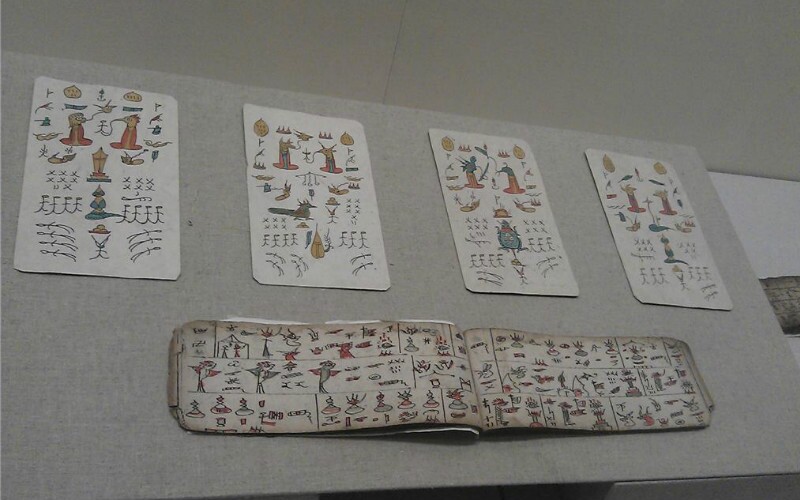Yinxu, the ruins of the last capital of China's Shang Dynasty (1766 BC - 1050 BC), is one of the oldest and largest archaeological sites in China as well as one of the historical capitals of China and a UNESCO World Heritage Site.
Not surprisingly, Yinxu has become a famous historical and cultural city in China, which is recognized as a milestone – with all its horrors as well as its splendors – on the social development path of the species.
Scale
The scale of Yinxu was enormous. Yinxu was roughly 6 kilometers long and 5 kilometers wide, covering an area of 30,000 square kilometers.
Layout
The layout of Yinxu was such that it radiated out along one side of the Huan River, with the Ancestral Temple at Xiaotun Palace (a name later given to the palace ruins) at its center. The city had no walls, evidence perhaps of the expanse and the degree of authority that the king exercised in this slave society.
Main Attractions
More than the usual sets of stone foundations that mark a forgotten city, Yinxu has yielded up a plethora of fascinating archaeological artifacts, including palatial buildings, complete tombs, and written records in the form of so-called oracle bones, which were heated and cracked and then inscribed – in a unique script that is the precursor to the Chinese character script – the record of the divination
Human Sacrifices
There were also remains of human sacrifices, including a child, in five of these pits. Other sites within the excavation complex revealed caves and family tombs, and artifacts suggesting the existence of tribes or large families.
Various workshops were also unearthed, including workshops for the casting of copper and the making of jade.
Remains of A Queen
In addition to the remains of the queen, there were skeletal remains of six dogs and sixteen slaves in the tomb. The tomb also contained numerous other precious items befitting a queen, including earthenware and jewelry.
Remains of A Royal Palace
The remains of a royal palace, royal tombs, and an immense quantity – more than a hundred thousand – of oracle bones which would reveal the "written language" of these ancient Chinese forebears, were unearthed.
A Park of A Museum Complex
All of these finds have been carefully preserved and put on display at the museum complex which, in fact, forms a park, so plentiful have the archaeological finds been there.
The park can be separated into two parts: one which focuses specifically on the oracle bones and the deciphering of their inscriptions; the other one which focuses on the life and times – and chronology – of the Shang Dynasty.
The visitor will note that the appearance of the park's gate is strikingly odd. The explanation is that it was deliberately crafted so that its outline follows that of the oracle bone script word for "gate".
Yinxu Museum - the Silhouette of the Shang Dynasty
 Yinxu Museum - the Silhouette of the Shang Dynasty
Yinxu Museum - the Silhouette of the Shang DynastyYinxu Museum is the only professional and systematic underground museum in China, with nearly 600 relics and heritages of great historic and appreciated value finds relating to the Shang Dynasty continuing to be found in the region.
This museum is divided into 5 parts, including the Dayong Shang Exhibition Hall, Bronze Vessels Exhibition Hall, Jade Exhibition Hall, Inscriptions on Oracles Exhibition Hall and the Special Exhibition Hall.
Travelers can walk along the historical corridor, which starts from the Revolution of 1911 (the Chinese bourgeois democratic revolution led by Dr. Sun Yat-sen which overthrew the Qing Dynasty).
The Chariot Pits- the Earliest Cars and Roads Heritages
The Exhibition Hall of Chariot Pits served up some rare well preserved animal driven carts, and in each of the six pits were found the remains of a carriage and a team of horses. These finds can provide clear evidence that China is the country that was the earliest to invent and use cars.
Oracle Bone Pit - the Earliest Library and Archives
The Oracle Bone Pit, also called the YH127 Oracle Bones Cellar, was discovered in June 1936, during the 13th excavation of Yinxu. The shape of this cellar is a regular shape with 10,000 oracles bones, which is of rich significance both in history and study.
Stele Gallery of Oracle Bone Inscriptions - the Dictionary of the Shang Dynasty
The Stele Gallery of Oracle Bone Inscriptions is carved on the walls in a long corridor. Each stele marks a character of the Shang Dynasty, which is imitated from the oracle bone inscriptions.
Fuhao's Tomb - the Earliest Female General's Tomb
Located in the south-west of Yinxu, Fuhao's Tomb was the only intact tomb discovered in 1976. The owner and dynasty of the tomb are certain according to the inscriptions of the oracle bones. About 1,928 relics were buried with Fuhao, which were exquisite and sophisticated in ancient China.
Fuhao, the wife of the king of the Shang Dynasty, Wuding, was the first female general who could not only administrate the country, but also win battles in history.
History of Inscriptions of the Oracle Bones
How Yinxu was discovered is itself almost as unique as what was unearthed here.
In 1899, the director of the Imperial College, who suffered from malaria, had succumbed to a usual periodic bout of fever, but the pharmacist offered the director a new "drug", namely "dragon bones". What the good director received were some small, flat pieces of bone material that obviously belonged to a larger flat bone with etchings which vaguely resembled the Chinese character script.
The director naturally imagined that what he held in his hand might be a shard from a larger piece of ancient bone material that had been used as a sort of ledger to record important data – and that there might be more such bone material at the same location.
The director, with the help of an assistant, quickly traced the magic "malaria drug" to the small village of Xiaotun on the outskirts of Anyang, and there a great number of similar bone shards were unearthed.
Enough pieces of "ledger" had been found by 1917 to permit a Chinese scholar to decipher the "oracle bone" inscriptions, as they had been dubbed. The information that the oracle bones held related to the genealogy of the rulers of an ancient Chinese dynasty
Development of Excavations
The first round of excavations at Yinxu took place between 1928 and 1937, conducted by the Chinese Institute of History and Philosophy, which undertook archaeological digs at the time.
Further excavations have been carried out beginning in 1950 by the Archaeological Institute of the Chinese Social Sciences Academy. The Archaeological Institute found evidence of stratification, suggesting that the Shang Dynasty was indeed of a long duration.
The remains of palaces and temples as well as royal cemeteries were discovered, and in the process the institute learned much about the art and science of archaeological digging, thus laying the groundwork for future excavation projects, of which there would be many in the new China.
Travel Essentials
- Location: Xiaotun District, Anyang City
- Ticket price: 90 yuan
- Tour guide price: 50 - 80 yuan
- Tel: 0372-3686809
- Open: April - September: 8am - 6pm; October - March: 8am - 5.30pm
- How to get there: Take bus 1, 6, 15, 18, 39 or 41 to Yinxu (殷墟).
- Website: www.ayyx.com








